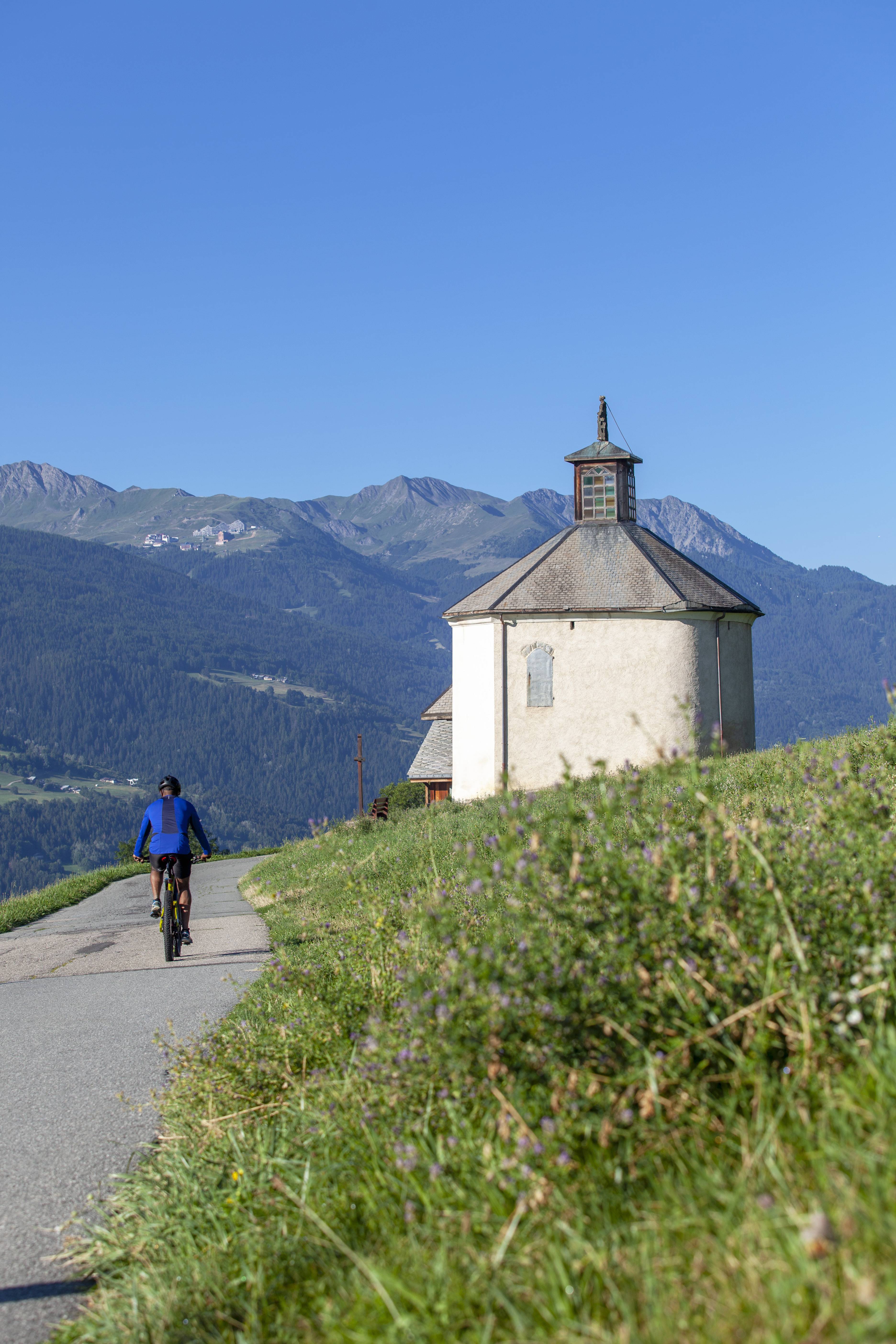
Between hamlets and sunny highland pastures at the Dôme de Vaugelaz
Description
Follow the blue waymarks: Dôme de Vaugelaz.
E-bike rental shops:
297 Av. Marechal Leclerc
73700 Bourg Saint Maurice
+33 (0)4-79-40-05-54
Intersport Bourg Saint Maurice
Zone commerciale de Super U
73700 Bourg Saint Maurice
+33 (0)4 79 04 04 30
Laboshop Bourg Saint Maurice
avenue du stade
73700 Bourg-Saint-Maurice
+33 (0)4 79 07 07 61
PRECISION SKI Mountain Tribu
43 Place de la Gare
73700 Bourg Saint Maurice
+33 (0)4 58 14 04 44
- Departure : Place de la gare (in front of the station) - 73700 Bourg-Saint-Maurice
- Arrival : Place de la gare (in front of the station) - 73700 Bourg-Saint-Maurice
- Towns crossed : BOURG-SAINT-MAURICE, LES CHAPELLES, and LA PLAGNE TARENTAISE
Forecast
Altimetric profile
Recommandations
If in doubt, you can take an introductory lesson in how to ride an electric bike with an instructor.
If you see a herd ahead, slow down and go round it. If there is a patou, a guard dog, climb down from your bike and walk, pushing it alongside you. Avoid making any sudden or aggressive gestures towards the dog and move away from the herd slowly and calmly. The dog will only be checking that you do not pose a threat to its herd. Respect the parkland and close gates behind you after you've gone through them.
The mountain is living, please respect it by staying on the paths and tracks.
Information desks
Transport
Train services run as far as Bourg-Saint-Maurice. Find out more at: www.oui.sncf.com
Have you also thought about car sharing
Access and parking
Parking :
Accessibility
- Emergency number :
- 114
10 points of interest
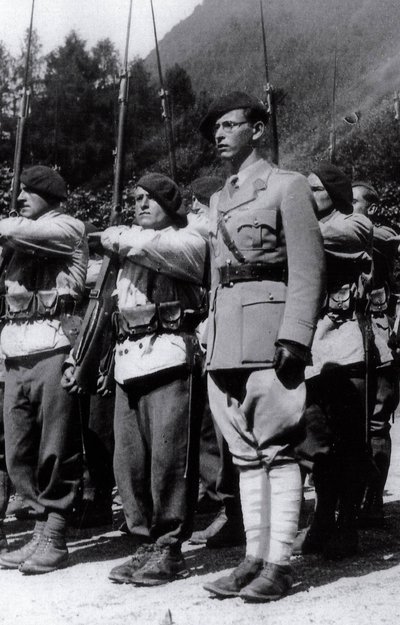
Le Capitaine Desserteaux - CCHT  History
HistoryRue Capitaine Desserteaux
This street is named after a captain from the 70th Alpine Fortress Battalion which, in 1940, became famous for defending, from the Italians, the fort of La Redoute-Ruinée (located above the resort of La Rosière de Montvalezan). He died in Indochina in 1947.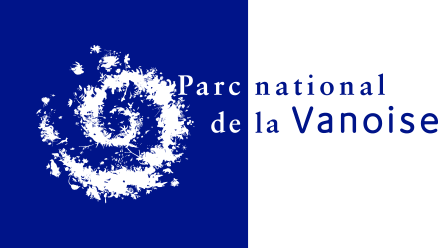
 Know-how
Know-howE-bike rental shop: Gravity Lab
E-bike rental shop:
GRAVITY LAB297 Av. Marechal Leclerc
73700 Bourg Saint Maurice
+33 (0)4-79-40-05-54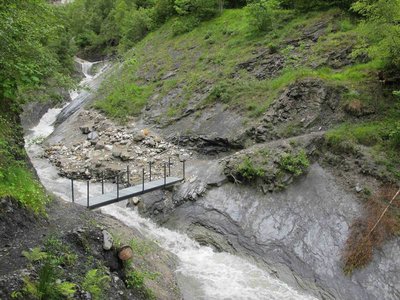
Pont de l'Arbonne - Francis Mignardot  History
HistoryThe Arbonne and its periods of high water
The town of Bourg Saint Maurice has always been under threat from the streams rushing through it. One of the first accounts found dates back to the year 163: leading an army, Emperor Lucius Verus was forced to stop at the entrance to the town because of the raging waters. Unable to cross this obstacle, he had a dyke built to protect the Roman road. The name "Arbonne" first appears around the turn of the 17th century in the expression "torren d'Arbena" which means river or white, foamy spring. In the 14th century, the waters of Le Nant Blanc, one of its tributaries, remained hidden for seven years in saliferous and gypseous cavities. One day, the mountainside gave way. The enormous pocket of water spilled out across the plain, forming an immense alluvial cone which pushed the bed of the Isère back to the foot of the north-facing side.
High water levels would occur in succession from 1579 until 2019, carrying away bridges and footbridges in their wake. A range of development and protection work has been carried out: land drainage, dam building and replanting trees on the banks.
Le four à brique en argile - Francis Mignardot  Architecture
ArchitectureBrick oven (clay)
The clay used to make the bricks of this oven is believed to have come from drifts or sedimentation. Brick buildings are uncommon in this region, which tends to give precedence to stone and timber. The latter would likely have been in use until the 19th century.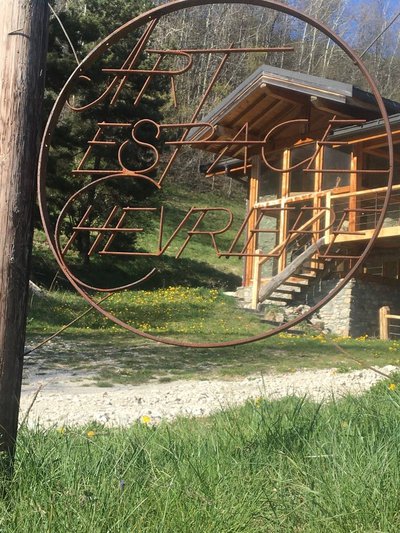
Espace Chevrière - aptv_redac  Know-how
Know-howArt Espace Chevrière
Don’t miss out on this highly original art gallery on the Versant du Soleil, located above the Tarentaise Valley facing the Vanoise Massif. Opened in 2017, it exhibits works by three artists: sculptor and painter Bruno Barbieri, sculptor Yannick Chirat and photographer Pierre Bottex.Open 1 May to 15 December from 2 p.m. to 5 p.m. (except Sundays) and upon request during the rest of the year.Contact details:
06 60 72 70 92
contact@art-espace-chevriere.com
Hameau de Chevrière
73700 Les Chapelles
http://www.art-espace-chevriere.com/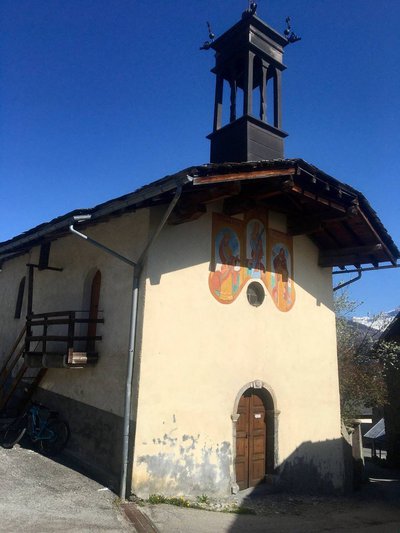
Chapelle Saint Antoine dans le hameau de Picolard - COVA  Small heritage
Small heritageHamlet of Picolard
1,250m up, on the Versant du Soleil (sunny side) ledge, this hamlet is a prime viewing spot for looking out over the ski areas of Les Arcs, Montchavin-les-Coches, La Plagne, La Rosière, the Col de la Madeleine and Mont Pourri.
St Antoine's Chapel, dating back to 1702, can be found here. Outside, you can admire the quadrangular pinnacle crowning it. Then step inside to see a Baroque altarpiece featuring typical iconography. The chapel lies along the "Chemins du Baroque" sightseeing trail.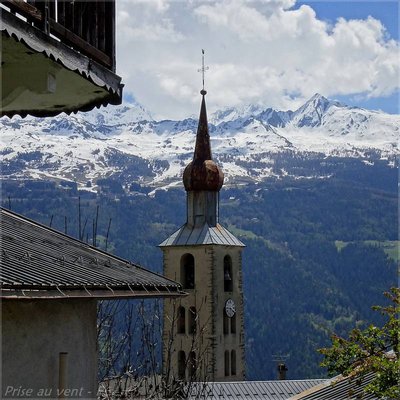
Clocher de l'église Saint Martin de Tours - Francis Mignardot  Small heritage
Small heritageSaint-Martin-de Tours Church in Les Chapelles
This little village is strongly shaped by the slope: it extends up an elevation gain of 2,000 metres, with the lowest point lying at around 800m and the highest point of the village reaching 2,900m. It measures 17sq km and is home to 504 inhabitants.
The present-day church was rebuilt between 1681 and 1686 where an old, and much smaller, church once stood. The Baroque décor inside would undergo significant renovations at the end of the 19th century, updating it to the taste of the day: the neoclassical style.
Open during religious services.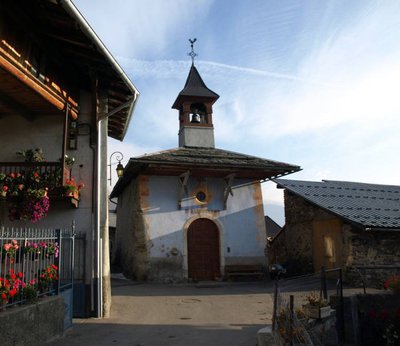
Chapelle Saint Barthélémy - CCHT  Small heritage
Small heritageSaint Bartholomew's chapel in la Thuile village
La Thuile de Vulmix village is perched on the Roignais slopes at an altitude of 1,289m.
The chapel dedicated to St Bartholomew was rebuilt in 1679 where an older, run-down church had once stood. St Bartholomew is the patron saint of butchers, tanners, glove makers, binders and curriers. The chancel and ante-chancel are separated by a walnut chancel screen crowned with a rood beam (1681) bearing decoration of Christ on the cross and statues of the Virgin Mary and St John. The small colourful altarpiece is attributed to Etienne Fodéré, a local sculptor from Maurienne who fashioned many of the sculptures around the valley. It is graced with various statues of saints whom villagers call on to protect them from various ills.
Open daily for unaccompanied visits.
For guided tours, please contact the Tourist Offices of Bourg St Maurice les Arcs
Tel.: +33 (0)4 79 07 12 57
La chapelle du Poiset dédiée à Saint Jean l'Evangeliste - Pierre Villeneuve  Small heritage
Small heritageLe Poiset: quintessential village
The name of this hamlet comes from the French word for well, puits. It nestles on the sunny side and enjoys an unrestricted view over the Haute-Tarentaise Valley.
Much like the other surrounding villages, Le Poiset also has a relatively old chapel, which is dedicated to St John, the Evangelist.
The chapel is closed, but have a peek through the open-work entrance doorway and you'll be able to see an altarpiece showing St John plunged in a cauldron of boiling oil, an act of torture he is believed to have survived.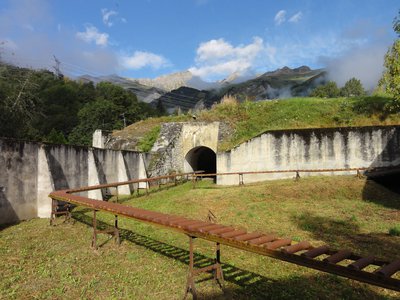
Le Fort de Vulmix - CCHT  History
HistoryVulmix Fort
When the Duchy of Savoy (Savoie) was annexed to France in 1860, the unification of Italy posed a new threat. In 1888 France established the Alpine troops as well as a protective system that ran from the Jura all the way down to Nice: the Séré de Rivière line. For the construction of the forts, emphasis was placed on large passes and natural outlets. Tarentaise Valley was particularly exposed. It could be accessed from the mountain passes of Le Petit Saint-Bernard, Mont-Cenis and L'Iseran, and preventing such free passage was therefore paramount. The plans for the Séré de Rivière system anticipated several structures. La Redoute Ruinée, built just above the mountain pass, provided it with direct protection.
This fort is supported by another three, with very specific purposes:
- Vulmix (1,000m), barring access
- Le Truc (1,573m), protection
- La Platte (2,000m), surveillance
Despite the distance between them, the three forts of Bourg-Saint-Maurice formed an integral protection and surveillance system. The Vulmix Fort was built between 1890 and 1891. The eight large-calibre cannon installed in its blockhouses prevented any attempted passage. This was the most cutting-edge fort in the Alps back in 1914.
It can be visited during the European Heritage Days (in September): enquiries at the Tourist Offices of Bourg-Saint-Maurice / Les Arcs.
Tel.: +33 (0)4 79 07 12 57
